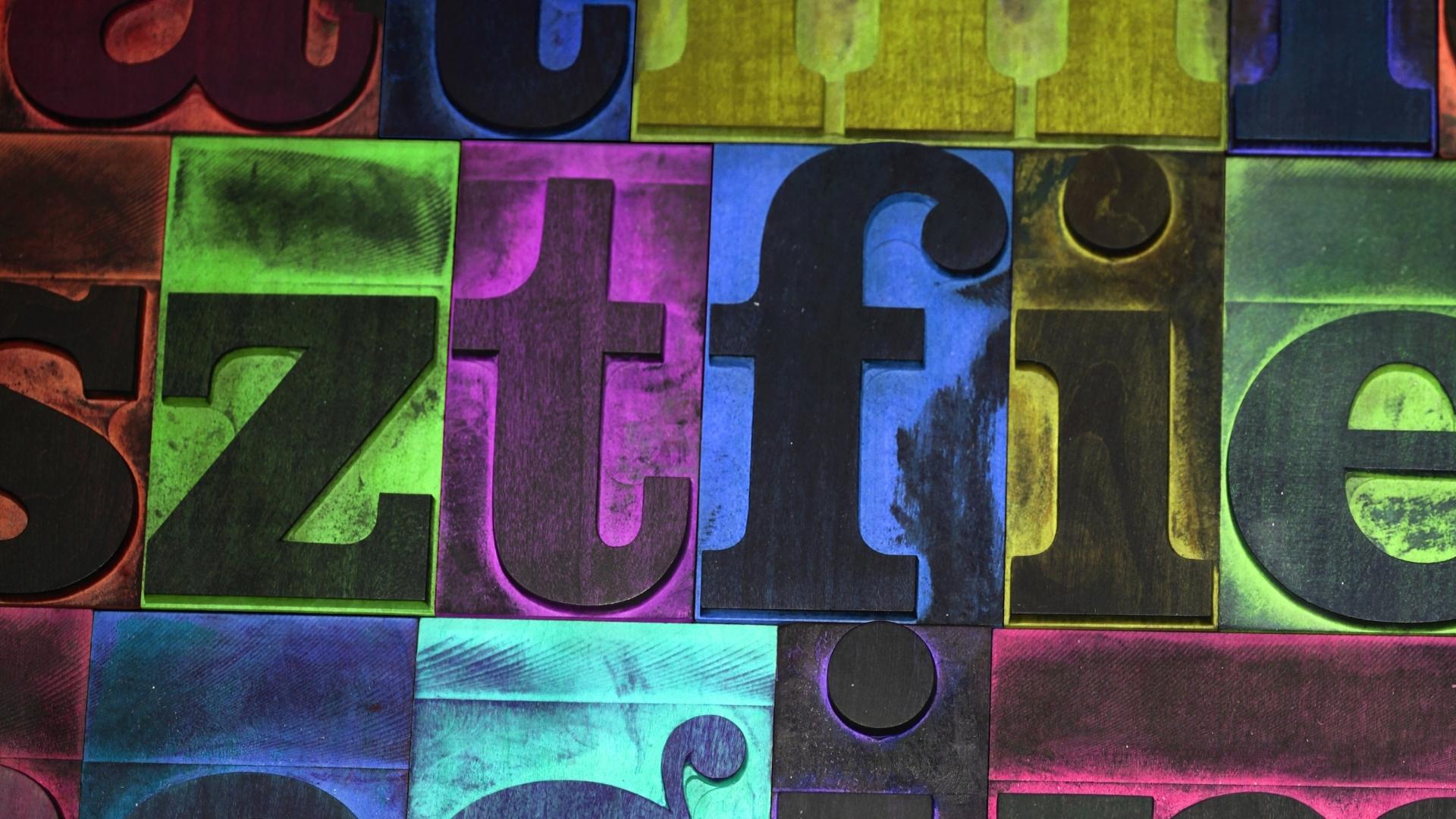Typesetting Tips for Authors

Readers rarely talk about how a book is typeset. They discuss the story, the characters, the word choice — how the author made them feel — but not typesetting. Most don’t even notice the work that goes into interior file design. Much like IT support, typesetting is an invisible job. Workers in the field rarely see praise for good work. If an IT person does their job well, it’s business as usual. It’s only when the internet crashes or everyone gets a virus that anyone notices them. In the same vein, few readers notice when a book is well designed, but lots will comment when amateur design choices jar the reading experience.
If you want to publish professional-standard books comparable to the bestsellers in your local bookstore, you must pay attention to typesetting. Unlike readers, commercially minded authors need to appreciate the work and learn how to distinguish good typesetting from bad. If you’re unfamiliar with the job in general, you might simply need to start by learning exactly what it is that typesetters do. Here’s a summary: not to be confused with typographers, who design fonts, typesetters design books’ interior page layouts, covering every element from font choices and paragraph alignment to white space distribution and the positioning of graphic elements.
Traditional publishers handle the typesetting for authors they publish. Indie authors, meanwhile, manage the task themselves. Whether they plan to do the work themselves, outsource it to a freelancer, or trust a traditional publisher to do it, though, signing off the final proof copy is almost always down to the author. Hence, it makes sense to understand a typesetter’s thought process and choices. Today’s blog post explores such key information, explaining a few high-impact typesetting tips you can recall either to do the work yourself or check others’ work and ensure a fantastic reading experience for your readers.
Consider the Canvas
The first thing you must consider when typesetting a book is the size of your canvas. Books come in lots of formats that require typesetting: ebooks, paperbacks, hardbacks, large print, and more. Print books have multiple potential trim sizes and ebooks must be adaptable for different devices. Thus, it’s important to know the trim size you want, or the ideal device you want to optimise your ebooks for, in advance, because the page size and shape will dictate your typesetting choices. Jumping right into headings and paragraph indents might be tempting, but you’ll have to re-do much of that work if you start with the wrong trim size or device in mind.
Find examples of books you’d like to replicate in your genre to help you. Compare bestsellers and note any similarities. Are they the same trim size? Do they use mainly serif (curly) fonts like Baskerville or sans-serif (not curly) ones like Helvetica? What point size are their fonts in the print formats? Do their interior pages contain dense blocks of text or a lot of white space? Do they use drop capitals? Are illustrations placed on their own lines or does text wrap around them? If you’re looking at ebooks, is the text reflowable or fixed? Your answers will differ depending on whether you’re looking at children’s picture books, thrillers or non-fiction guides.
Balance Quality and Cost
Once you understand the best practices in your genre, the next thing you must consider is cost. Ultimately, as much as everyone loves a beautifully typeset book, sometimes publishers must make compromises on the reading experience to make money. This is particularly true when working with print-on-demand books that have a high unit cost. If a book has a large wordcount, you will still want to make the pages look uncluttered and easy to read. Leaving too much white space on pages in these cases, however, can mean either creating a super expensive product readers refuse to buy or one that leaves you with tiny profit margins.
Conversely, you’ll occasionally need to compromise in the opposite direction. Say you want to produce an airport paperback with a large trim size but a small wordcount. In that case, the challenge is stretching the content to cover more pages so the book looks substantial enough to entice readers. The key is to find a balance. Trim too much fat and you’ll daunt readers with tiny text that vanishes into the spine. Pad too much, on the other hand, and you’ll create a book that looks empty, with huge text and margins, and too much space. Getting it right isn’t easy, but do a good job and you’ll end up with a book that’s both cost effective and enjoyable to read.
Address Basic Issues
Based on the discoveries of the Italian economist and philosopher Vilfredo Pareto, the Pareto principle dictates that 20% of a person or organisation’s time, energy and resources delivers 80% of their results. This is true in many lines of work, from farming to freelance photography. Typesetting works the same way. It’s true; no matter a book’s form and trim size, there are a few typesetting tricks you can apply to almost any amateurly typeset project to get it 80% of the way to looking professional. These basic changes, though simple, can drastically improve the look and feel of a book’s interior.
One such task is fully justifying the body text within chapters. The standard setting for most word processing software packages is to left align text, leaving a straight edge on the left side of paragraphs but a ragged one on the right. Using a single button, however, you can align your text on both sides like most professionally published books. Setting a style to indent the first line of paragraphs, but removing the indent from the first paragraph of each chapter, is also an easy trick that dramatically improves a book’s perceived production value. So is adding mirror margins to account for the spine. These typesetting changes, though simple, make a huge difference to the final product.
Check Granular Distractions
Sweeping changes can get you a long way, but world-class typesetting requires a close attention to detail. Indeed, a good typesetter makes lots of small tweaks to ensure a smooth reading experience happens on every page. They often tackle granular details that many readers will never notice but that distract them if left unaddressed. Unevenly spaced lines, for instance, might seem inconsequential at first glance, but too many will slow a reader’s progress, even to the point where they close the book and never return. Learn to fix a peppering of small issues with typesetting prowess and you can even elevate an okay book to page turner status.
Widows, the first lines of paragraphs that appear at the bottom of a page, and orphans, the last lines of paragraphs that appear at the top of a page, are just two examples of potential reader distractions. These issues ruin the framing of pages, making them look untidy. Hence, you need to move them. Other small issues include:
- Rivers: coincidental alignments of spaces that run through paragraphs.
- Word stacks: instances where two or more consecutive lines start with the same word.
- And ladders: situations where two or more lines end with a hyphen.
Addressing these small typesetting tweaks is fiddly business. That said, you can fix most by altering the kerning on certain lines — the spacing between characters — or including non-breaking spaces to stick words together so they shift to another line.
Use Software and Services
A final typesetting tip is that it’s possible to make every little decision yourself but not always necessary. After all, software and services can do a lot of the heavy lifting for you. If you’re up for the challenge, using specialist book formatting software may be your best course of action. Reedsy and Draft2Digitial both offer free book formatting tools that automate a lot of the subtasks that typesetting entails. That said, if you have spare cash and want to get some of the best offline tools in the industry, you can also try Atticus, or Vellum if you have access to iOS. Together, these tools make lighter work of typesetting than an all-round tool like Microsoft Word.
It’s responsible to learn the process, at least once, so you can assess typesetting work when proofreading your books. However, that doesn’t mean you have to tackle it yourself for every project. Indeed, many authors outsource to a professional to save them time or mental bandwidth. If that sounds like a better option for you, you can find professional typesetters on many freelancer marketplaces, including Reedsy, Upwork, and Fiverr. If you’re able to do so, outsourcing your typesetting can be useful, freeing up valuable time you can spend elsewhere, whether that be on writing the next book or enjoying the fruits of your successful author business.
Many authors argue that a book’s interior design shouldn’t matter; that the quality of their words should be enough to make a great book. The truth, though, is that the words are just one component of the total reading experience. Just as diners judge a restaurant on their service and cleanliness as well as their food, readers judge a book by its cover, interior layout and even the way its pages smell. Approach your books with a holistic view and you’ll train your readers not just to expect good content from you but an unforgettable reading experience.

Daniel Parsons
Dan Parsons is the bestselling author of multiple series. His Creative Business books for authors and other entrepreneurs contains several international bestsellers. Meanwhile, his fantasy and horror series, published under Daniel Parsons, have topped charts around the world and been used to promote a major Hollywood movie. For more information on writing, networking, and building your creative business, check out all of Dan’s non-fiction books here.
Grab Your SPF Freebies!
Sign up to receive your SPF starter package, which includes a free 3 part video series on getting started with FB ads, and inspirational and educational weekly emails.

